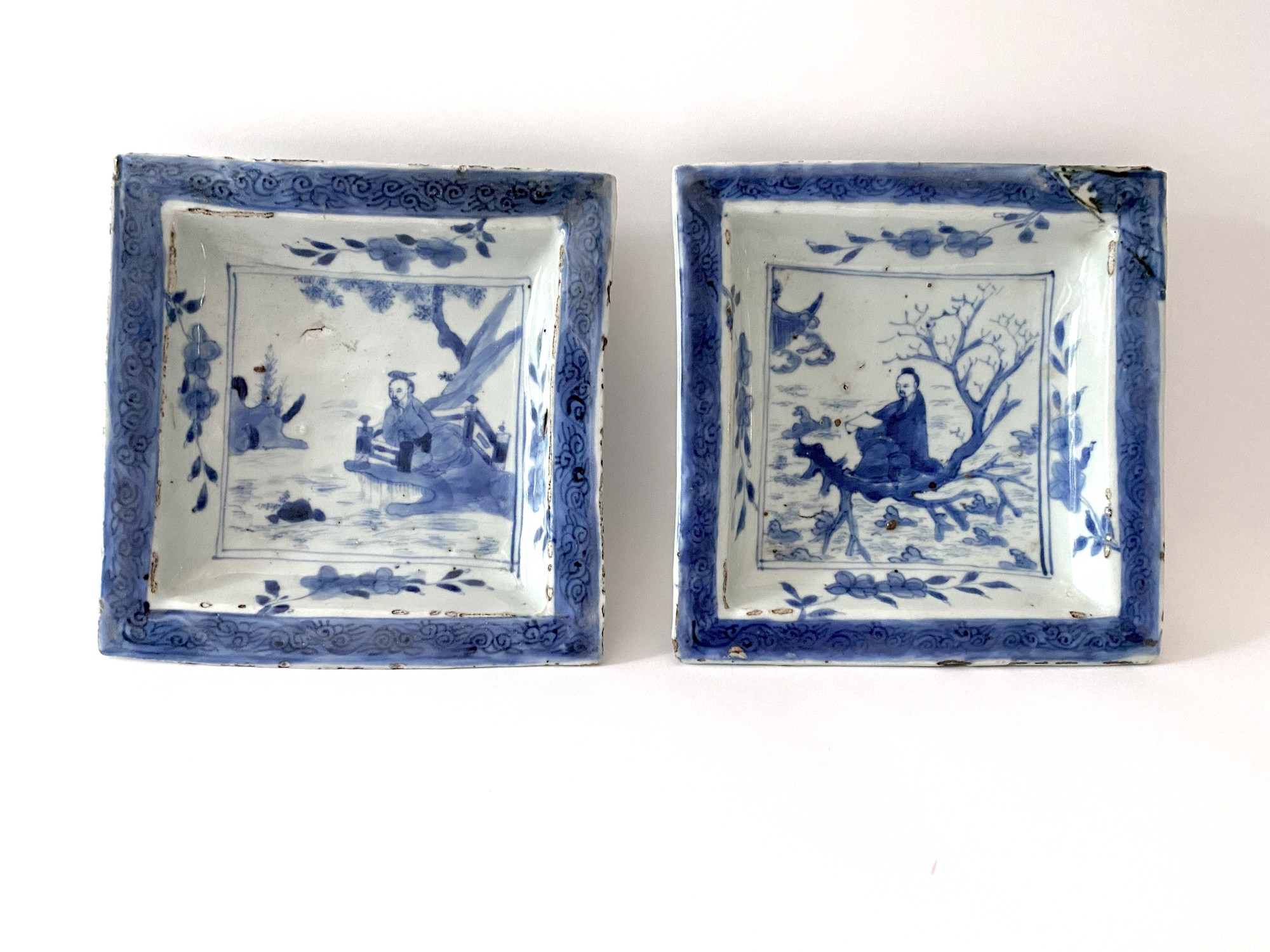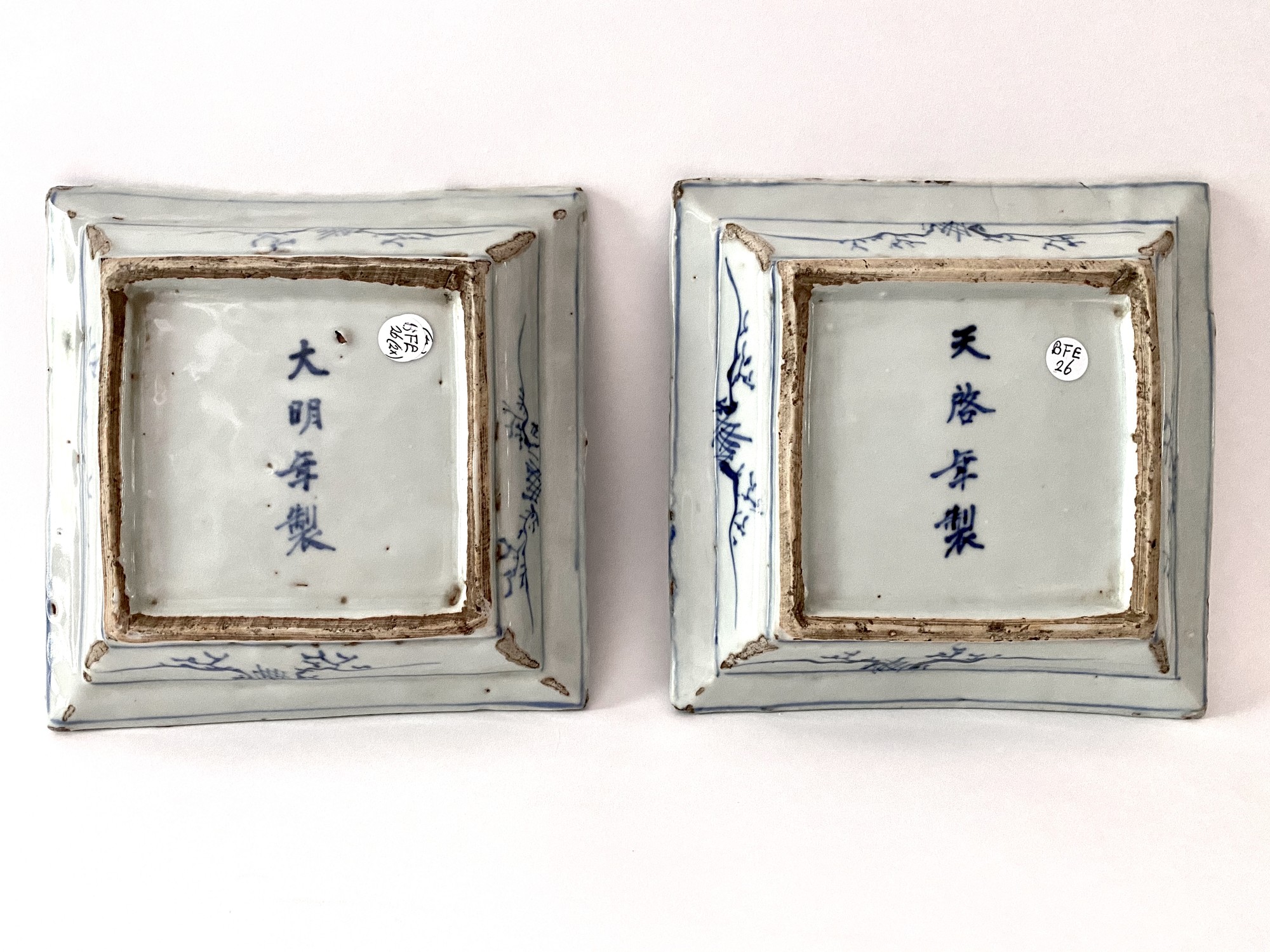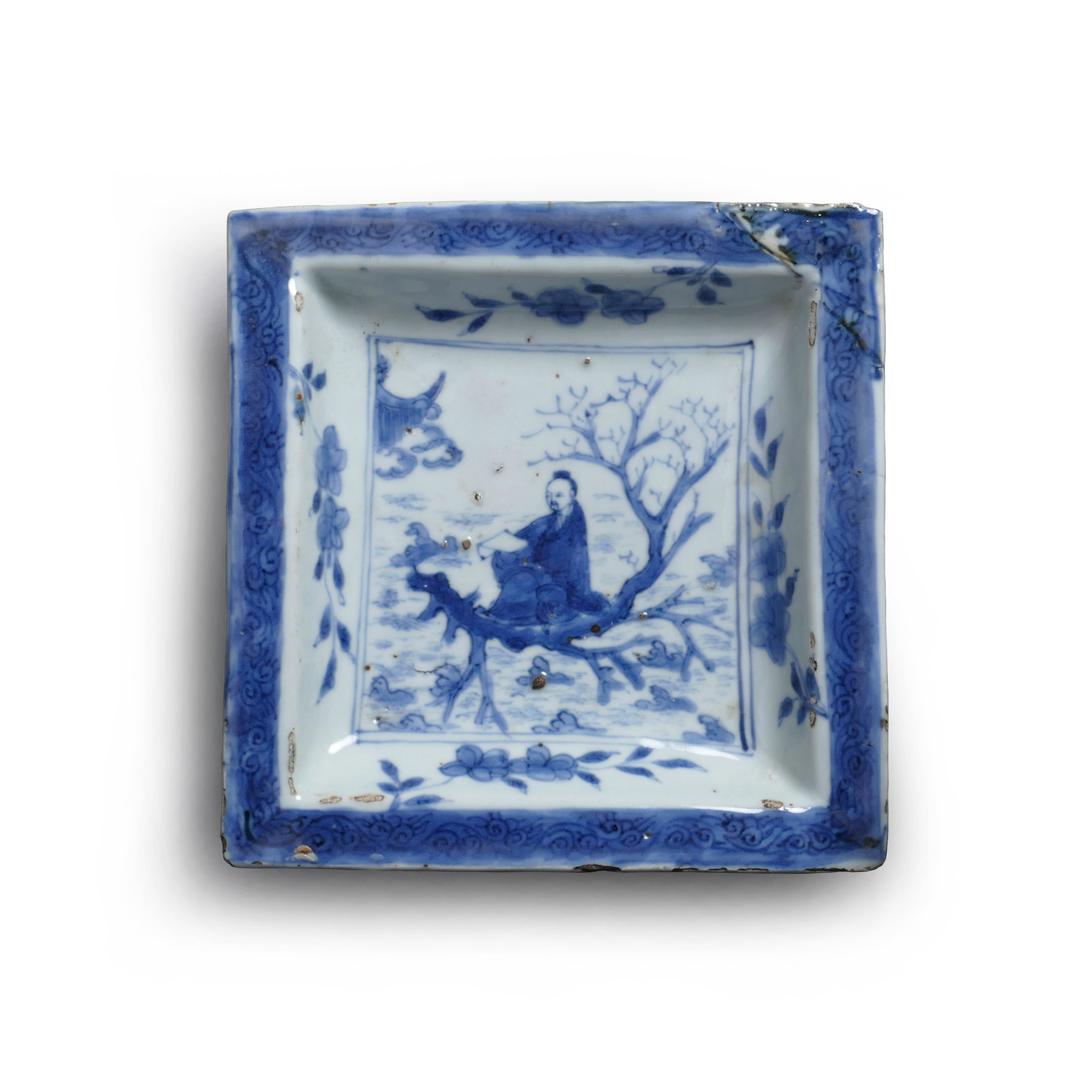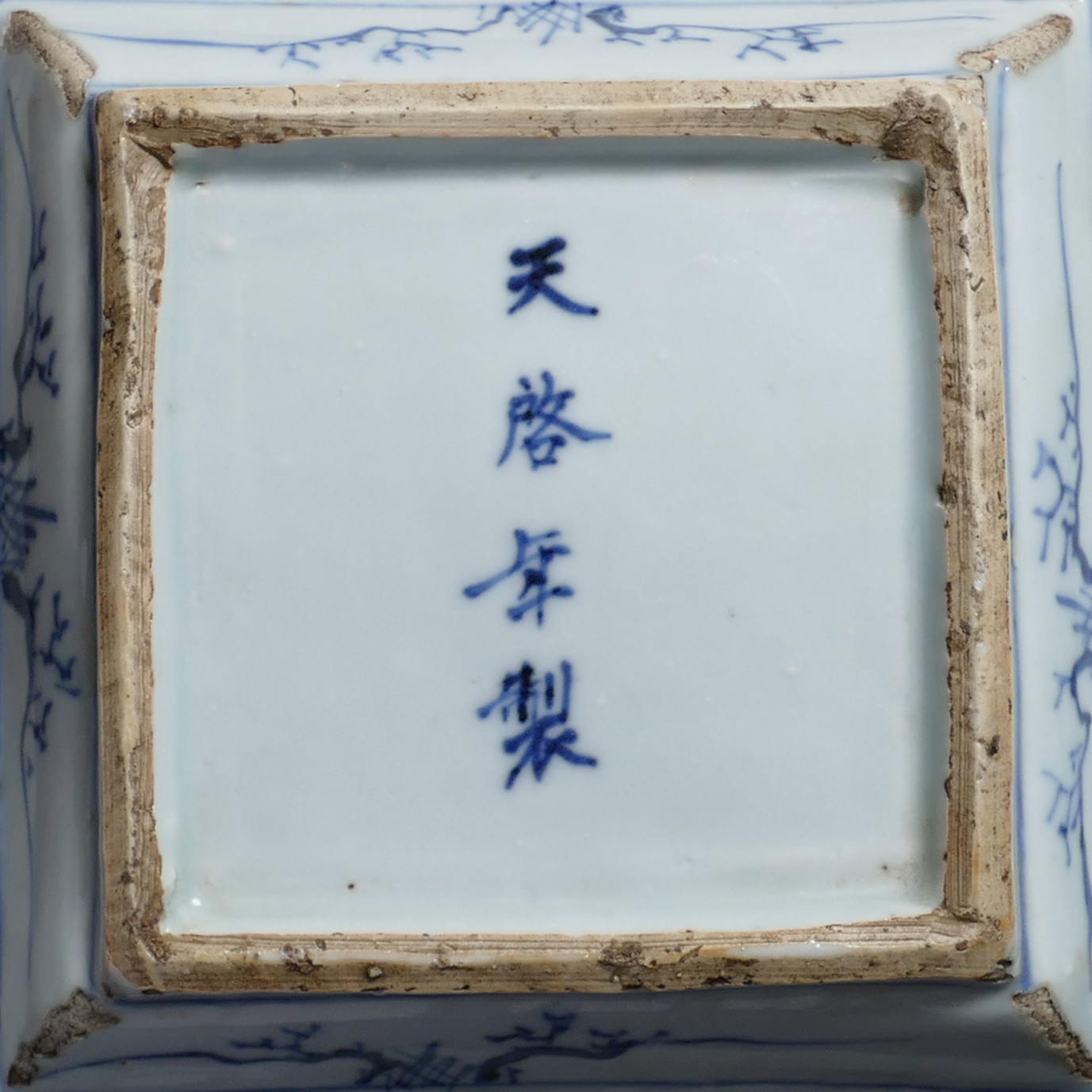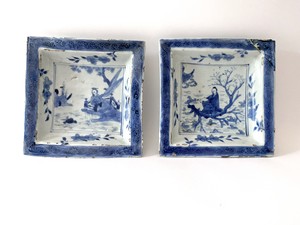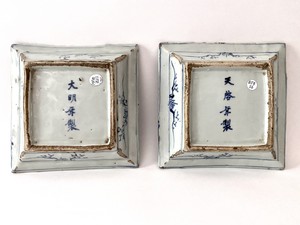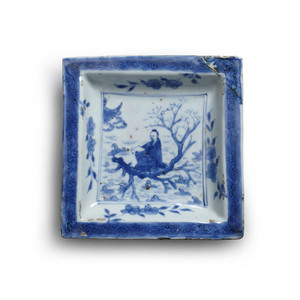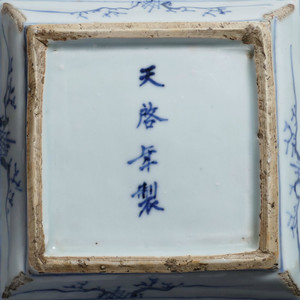Tianqi mark and period, 1621-1627
The square dishes are sturdily potted with a flat everted rim. One is painted in the central panel in underglaze blue with Zhang Qian seated atop a log holding a book while floating amidst crested waves. Distant clouds reveal the roof a of a pavilion. The cavetto is decorated with flower sprays issuing from the rim, below a scrolling ruyi border which is covered with a blue wash. The recessed base is inscribed in underglaze blue with a four-character Tianqi reign mark written in a single line
The other dish is painted in the central panel with a scholar seated at a river side leaning against a fence below a pine tree. The base is inscribed with a four-character Ming mark
16 and 15.7 cm wide
Zhang Qian was a legendary explorer who lived in China during the Han dynasty (206 BC - AD 220) and is usually depicted on a log floating down a river. He is known for going to the Western region where he promoted cultural and economic exchanges between the East and West (1). Zhang Qian (Chōken in Japanese) was also popular in Japan as can be seen from a painting by Maejima Sōyū dating from the mid-sixteenth century, in the Metropolitan Museum of Art, New York (2).
The upper right corner of the present dish is re-stuck under the glaze, making it an original defect, an imperfection of the sort the Japanese liked. The four-character reign mark on the present dish is painted in a style that is rarely seen.
There is a Wucai Tianqi-marked dish painted with a figure on a raft in the Metropolitan Museum of Art, New York (3), where the figure is identified as Li Tieguai. The subject can be seen on a ‘Transitional’ brush pot and globular jar, formerly in the collection of Gerald Reitlinger, in the Ashmolean Museum, Oxford (4). Zhang Qian is also depicted on a conical cup from the Chongzhen period (1628-1644), formerly in the collection of Julia and John Curtis, sold at auction in New York, where it is mentioned that this subject rarely occurs on porcelain (5). There are several seventeenth-century jade and rhinoceros-horn carvings known depicting Zhang Qian on his raft (6).
Provenance: Formerly in a Japanese private collection
Acquired from J.A.N. Fine Art London
- Butler, M. and Wang, Q., Seventeenth Century Jingdezhen Porcelain from the Shanghai Museum and the Butler Family Collections-Beauty's Enchantment, Shanghai 2006, p. 142
- The Metropolitan Museum of Art, Recent Acquisitions, A Selection, The Metropolitan Museum of Art Bulletin, v.60, 2002, no. 2
- Little, S., Chinese Ceramics of the Transitional Period-1620-1883, Washington 1989, pl. 13
- Willis, Ed., Eastern Ceramics and other Works of Art from the Collection of Gerald Reitlinger, Ashmolean Museum, Oxford 1981, pls. 66,67
- Christies, 16 March 2015, lot 3529
- Chapman, J., The Art of Rhinoceros Horn Carving in China, London 1999, pls. 50-52
BFE 26 明天啟 青花「古染付」盤一對
時代:明 天啟,1621至1627年。
特徵:其中一件描繪張騫手持一本書、浮坐流水上,盤底書「天啟年製」。另一件則描繪一位文人倚坐河邊,盤底書「大明年製」。
尺寸:兩件各寬16與15.7公分。
來源:來源:原日本私人收藏。購自倫敦J.A.N. Fine Art。
